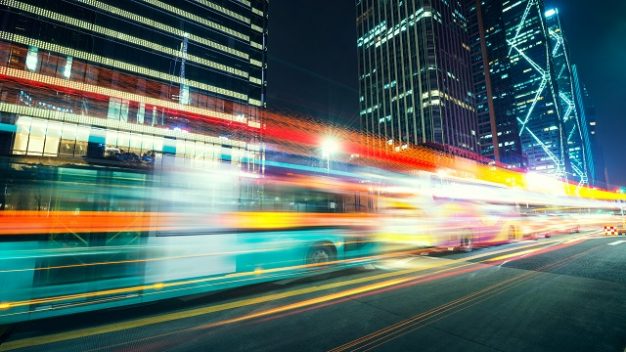
New mobility is coming to a city near you – will it be sustainable?
To harness the benefits of new mobility, decision-makers should establish clear guidelines that prioritize safe, efficient and equitable transportation for all.
More than 300 new bike-share services were launched worldwide last year. Ride-hailing services such as Uber and Didi Chuxing together provide more than 45 million rides a day. Electric scooters are accounting for more short trips in the places where they’re available and drones and autonomous vehicles are getting better every day.
New mobility
These so-called “new mobility” services and technologies are not just a phenomenon in wealthy countries; middle- and low-income countries are also showing the way. It’s an exciting time.
But governments can’t afford to sit back and be spectators – they need to ensure that this mobility revolution benefits everyone. Advances in electric, autonomous and data-driven technologies are changing how people get around but also cities themselves. These changes could lead to healthier lifestyles, less traffic, fewer carbon emissions and pollution, and less road space needed for cars.
Already, between 50 and 90 percent of trips in sub-Saharan African cities are by minibus and other “paratransit” vehicles. Digital mapping projects in places like Nairobi and Accra show how these traditional services can be integrated and optimized for better service and less congestion.
But new mobility technologies could also lead to crowded or unsafe sidewalks, mountains of unused bikes and scooters, more cars on roads, and an even wider gap between the haves and the have-nots. To harness the benefits of new mobility, it’s important for decision-makers to establish clear priorities that encourage sustainable, safe and equitable mobility for all.
This is especially true in today’s fastest growing cities in low and middle-income countries, where new infrastructure is going up daily and decisions are being made about transport systems that will affect generations.
The ability to call a car at the push of a button has opened up access to urban transport from San Francisco to São Paulo. But there are challenges: recent studies suggest that the number of ride-hailing users opting to travel alone combined with an increase in the number of drivers for these services is outweighing the number of car trips avoided.
Bad news
This is bad news for people and the planet.
Already, cities like Beijing are struggling with increased traffic, pollution and road safety issues. Approximately 1.3 million people die on the road annually around the world, 90 percent of them in developing countries, and the number is increasing as more people move to cities.
The transport sector alone is responsible for a quarter of global energy-related greenhouse gas emissions.
But with the right incentives and pricing mechanisms, trends could be flipped.
Ride-hailing could become a feeder system that takes commuters from their homes to bus or metro stations. In São Paulo, the city’s new regulatory framework taxes these services at a lower rate for shared rides and electric cars, and for trips to parts of the city that have limited transport options.
Similar proactive approaches can help policymakers adjust to new bike-sharing systems, electric scooters and even autonomous vehicles.
WRI and the Financing Sustainable Cities Initiative are helping Bhopal, India, and Bogotá, Colombia, build sustainable bike-share systems.
By 2035, there will be an estimated 30 million partially or fully autonomous vehicles in operation. Shared taxi services that never need to park could massively reduce the amount of road space devoted to cars in dense urban areas, completely changing how cities are designed.
On the other hand, simply replacing individual car ownership with autonomous vehicles would have the opposite effect, filling the streets with empty, circling vehicles waiting for their owners to finish the latest errand. This would reverse recent shifts towards more active, sustainable options, like pedestrian and bike-friendly streets.
So, is new mobility good news or bad news for sustainable transport? The answer depends less on technology and more on policy. The choices made over the next few years will be crucial.
Harnessing the benefits
Harnessing the benefits of new mobility does not require cutting-edge technology or large investments. Programs can be simple and affordable, complementing rather than competing with public transit. Mexico City and Quito are among the world capitals that have committed to phasing out internal combustion engines, while India and South Africa have made similar pledges. Countries such as Chile, India, Jordan, Nepal and Ukraine have devised novel electric mobility plans.
And solutions can be bottom up. Following fuel-supply disruptions in Kathmandu, people converted traditional three-wheeled public transport vehicles to battery power using simple technology, while safety apps in Brazil and India are helping commuters avoid dangerous areas.
This revolution will happen. It’s up to us to make sure the result is good for people and the planet.
If policymakers establish clear goals and link them to regulatory frameworks with land use planning, road design, and other elements of transport and urban planning, they can help ensure that new mobility will improve access to opportunity and jobs. It will also help make transport a part of the global solution to carbon emissions, air pollution and congestion.
What’s more, these benefits will reach everyone, rather than being reserved for the wealthiest.
Article courtesy of The City Fix.




